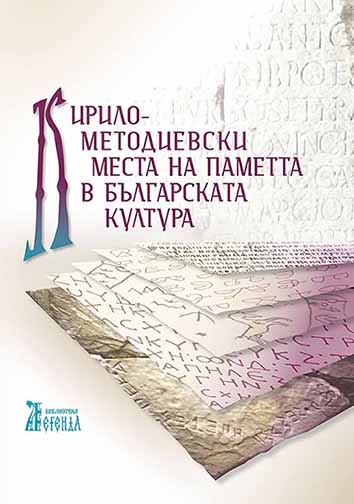Св. Седмочисленици и формирането на българската „протонационална“ идентичност
The Seven Apostles of the Slavs and the Formation of the Bulgarian “Proto-national” Identity
Author(s): Alexander Nikolov
Subject(s): Language studies, Middle Ages
Published by: Кирило-Методиевски научен център при Българска академия на науките
Keywords: The Seven Apostles of the Slavs; proto-national Bulgarian identity; Bulgarian ethnie; Paisiy Hilendarski; modern Bulgarian nation.
Summary/Abstract: Some historians assume that the emergence of national identities in Europe is a result of social changes occurring in the Early Modern era, while others claim that this process was set in motion already in the Later Middle Ages. Similar disputes on the beginnings of the modern Bulgarian nation are also present in historiographic works. The Slavo-Bulgarian History of Paisiy Hilendarski is usually presented as the first clear sign of the emerging Bulgarian nation. The aim of this article is to confirm a proto-national stage in the development of the Bulgarian medieval ethnic community, which was instrumental for the survival and continuation of the Bulgarians as a separate ethnie and, despite the interruptions in the independent existence of the Bulgarian state and church, led to the transformation of this ethnie into a modern nation. The development of the Bulgarian medieval state, founded in 681 (widely accepted date), lacks continuity. It has been interrupted in 1018 by the Byzantine conquest, which provoked deep social, economic and cultural changes and was followed by ethnic changes too. However, former Bulgarian lands, especially the core area around the last capital of the First Bulgarian Empire, Ohrid, retained certain level of ecclesiastical and economic autonomy. In the diocese of the Ohrid Bishopric began to emerge a “proto-national” pantheon, centered around the figures of St Clement of Ohrid and St John of Rila, and promoted by Byzantine prelates like Theophylactus of Ohrid and George Skylitses. The Bulgarians were regarded as a separate ethnie (according to the theory of Anthony Smith) within the limits of the Byzantine Empire, identified by their traditions, culture, language, and by their own patrons and spiritual teachers, who formed their “proto-national” pantheon. This tendency was successfully continued after the restoration of the Bulgarian state in 1185 (again a widely accepted date). The Second Bulgarian Empire had a multiethnic composition, including not only Slavic-speaking Bulgarians, but also Pecheneg and Cuman migrants, Vlah population, etc. All these groups, engaged very often in the government of the re-established empire, were centered around the political and state ideology of the Bulgarian ‘proto-nationalism”. In the newly formed “pantheon” of national saints were included as “Bulgarians” also people with non-Bulgarian or at least disputed ethnic origin. In their Vitae, written after the liberation from the Byzantines, the question about their ethnic origin was of growing importance. Special place was given to the holy brothers Cyril and Methodius, (whose Bulgarian origin and direct links with Bulgaria are at least obscure) and five of their most prominent disciples. They were venerated as Bulgarian saints and became important part of the “proto-national” ideology of the Second Bulgarian Empire. This attitude has been transferred successfully into the national ideology of the modern Bulgarian nation. Later, in the 16th century, this group of saints was stylized as the Seven Apostles of the Slavs and acquired popularity even among the Greek-speaking clergy. Consequently, Cyril and Methodius, who were representatives of the universalistic Christian culture of the Second Rome entrusted with the task to enlighten the Slavonic peoples and to introduce them to the Holy Scriptures, together with their most prominent disciples, became emblematic figures, actively engaged in the formation of one of the Slavonic “proto-nations” during the Late Middle Ages.
Book: Кирило-Методиевски места на паметта в българската култура
- Page Range: 109-126
- Page Count: 18
- Publication Year: 2023
- Language: Bulgarian
- Content File-PDF

